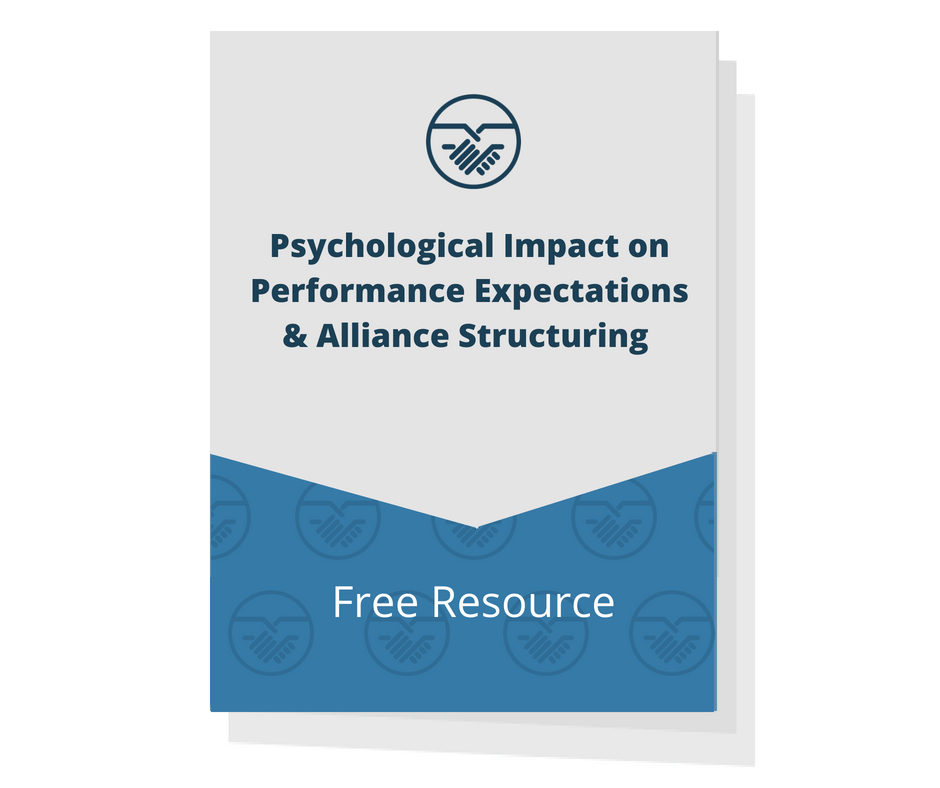
Academic Research: Psychological Impact on Performance Expectations & Alliance Structuring
There is increasing evidence that leaders make decisions on the basis of subjective frameworks. Psychological processes may play an important role in the structure of performance expectations and the methods firms employ to meet those expectations.
This article explores how a leaders’ orientation can:
- – influence performance expectations
- – impact governance models
- – develop their firm’s alliance capability
- – and encourage the development of organizational cultures conducive to alliance success.
This resource is provided to you by the ARM Partners Collaborative Research Alliance.
Authors:
 Dr. Jeffrey L. Cummings, Associate Professor, Sellinger School of Business, Loyola University Maryland, Baltimore, MD, USA. His research and consulting focuses on strategic alliances, strategy formulation approaches and knowledge-transfer mechanisms. His work has been applied at IBM, the World Bank and the U.S. Navy, among other organizations, and has appeared in Long Range Planning, California Management Review, Journal of Engineering and Technology Management and other outlets. E-mail: jcummings@loyola.edu. Dr. Cummings is a Co-Founder of the ARM Partners Collaborative Research Alliance.
Dr. Jeffrey L. Cummings, Associate Professor, Sellinger School of Business, Loyola University Maryland, Baltimore, MD, USA. His research and consulting focuses on strategic alliances, strategy formulation approaches and knowledge-transfer mechanisms. His work has been applied at IBM, the World Bank and the U.S. Navy, among other organizations, and has appeared in Long Range Planning, California Management Review, Journal of Engineering and Technology Management and other outlets. E-mail: jcummings@loyola.edu. Dr. Cummings is a Co-Founder of the ARM Partners Collaborative Research Alliance.
 Dr. Dave Luvison, Dave holds the rank of Executive in Residence at Loyola University Maryland and is a Fulbright Specialist. He earned his doctorate of business administration from the H. Wayne Huizenga School of Business and Entrepreneurship at Nova Southeastern University. His research and applied interests lie in the areas of inter-organizational collaboration and strategic alliances. Prior to entering teaching, Dave accumulated over 20 years of hands-on experience managing alliances, building alliance programs and consulting to firms in the area of alliance management. Dr. Luvison is a Co-Founder of the ARM Partners Collaborative Research Alliance.
Dr. Dave Luvison, Dave holds the rank of Executive in Residence at Loyola University Maryland and is a Fulbright Specialist. He earned his doctorate of business administration from the H. Wayne Huizenga School of Business and Entrepreneurship at Nova Southeastern University. His research and applied interests lie in the areas of inter-organizational collaboration and strategic alliances. Prior to entering teaching, Dave accumulated over 20 years of hands-on experience managing alliances, building alliance programs and consulting to firms in the area of alliance management. Dr. Luvison is a Co-Founder of the ARM Partners Collaborative Research Alliance.
* This is a pre-publication version of this paper. The published version is available at:
https://www.inderscienceonline.com/doi/abs/10.1504/IJSBA.2015.072022


